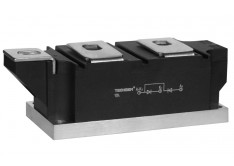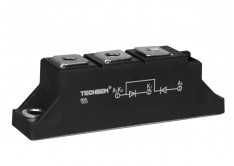Thyristor / Diode Modules
-
MDC500-14-416F3
Thyristor / Diode Modules
VRRM: 1400 (V)
IFAV: 500 (A) VAT not applicable
VAT not applicable
excl. Shipping Cost -
MDC500-16-416F3
Thyristor / Diode Modules
VRRM: 1600 (V)
IFAV: 500 (A) VAT not applicable
VAT not applicable
excl. Shipping Cost -
MDC500-18-416F3
Thyristor / Diode Modules
VRRM: 1800 (V)
IFAV: 500 (A) VAT not applicable
VAT not applicable
excl. Shipping Cost -
MDC500-20-416F3
Thyristor / Diode Modules
VRRM: 2000 (V)
IFAV: 500 (A) Price on request VAT not applicable
Price on request VAT not applicable
excl. Shipping Cost -
MDC500-22-416F3
Thyristor / Diode Modules
VRRM: 2200 (V)
IFAV: 500 (A) Price on request VAT not applicable
Price on request VAT not applicable
excl. Shipping Cost -
MDC500-25-416F3
Thyristor / Diode Modules
VRRM: 2500 (V)
IFAV: 500 (A) Price on request VAT not applicable
Price on request VAT not applicable
excl. Shipping Cost -
MDC55-12-223F3
Thyristor / Diode Modules
VRRM: 1200 (V)
IFAV: 55 (A) VAT not applicable
VAT not applicable
excl. Shipping Cost -
MDC55-14-223F3
Thyristor / Diode Modules
VRRM: 1400 (V)
IFAV: 55 (A) VAT not applicable
VAT not applicable
excl. Shipping Cost -
MDC55-16-223F3
Thyristor / Diode Modules
VRRM: 1600 (V)
IFAV: 55 (A) VAT not applicable
VAT not applicable
excl. Shipping Cost -
MDC55-18-223F3
Thyristor / Diode Modules
VRRM: 1800 (V)
IFAV: 55 (A) VAT not applicable
VAT not applicable
excl. Shipping Cost
More information about thyristor & diode module
In such a module, the thyristors and diodes are fitted together in one module. The module has a housing made of plastic injection molding and is mounted on a metal base plate. This base plate acts within the module as a cooling surface and is completely isolated from the terminals.
However, a thyristor itself is already a composition and not just in the origin of the word. The word is a combination of "thyraton" and "transistor". The thyristor, which features as a semiconductor device, has non-conductive properties in its original state. But once the current on the gate electrode has activated the thyristor, it remains in the conducting state, until the current falls below a minimum value.
In contrast to a diode, a thyristor in its basic non switch-on state is blocked in both directions and also remains so until a defined ignition voltage has reached in the forward direction. In the reverse direction, thyristors behave like normal diodes, which are completely blocked.
A diode in turn allows a current to flow in the forward direction through and is in the reverse direction almost completely isolated. The conductivity of the diode itself is dependent on the polarity of the operating voltage to anode and cathode, and the current flow direction. In combination with one or more thyristors in a module it is similar to a check valve. When a voltage is at a corresponding high level on the diode, it will be turned on in the forward direction, but prevents the current flow in the reverse direction. Where in a check valve the mechanical pressure builds up as the conqueror of the utilized spring force, this happens to a diode and a diode module via the threshold voltage and the minimum forward voltage.
Such power semiconductors in thyristors and diodes combined in one module can be used in a variety of applications and offer a power range from a few kilowatts to several gigawatts to meet different requirements. Mostly they are used in the control of phase sections or as rectifiers. They are used not only in the motor drives but also in power transmission and distribution, in chemical industry or built into modern welding equipment.





